Objective
To clarify by having what traits or attributes, I can say an analysis is inferential or predictive.
Background
Taking a data science course which touches on analyses of Inferential and Predictive. The explanations (what I understood) are
Inferential
Induct a hypothesis from a small samples in a population, and see it is true in larger/entire population.
It seems to me it is generalisation. I think induct smoking causes lung cancer or CO2 causes global warming are inferential analyses.
Predictive
Induct a statement of what can happen by measuring variables of an object.
I think, identify what traits, behaviour, remarks people react favourably and make a presidential candidate popular enough to be the president is a predictive analysis (this is touched in the course as well).
Question
I am bit confused with the two as it looks to me there is a grey area or overlap.
Bayesian Inference is "inference" but I think it is used for prediction such as in a spam filter or fraudulent financial transaction identification. For instance, a bank may use previous observations on variables (such as IP address, originator country, beneficiary account type, etc) and predict if a transaction is fraudulent.
I suppose the theory of relativity is an inferential analysis that inducted a theory/hypothesis from observations and thought experimentations, but it also predicted light direction would be bent.
Kindly help me to understand what are Must Have attributes to categorise an analysis as inferential or predictive.
